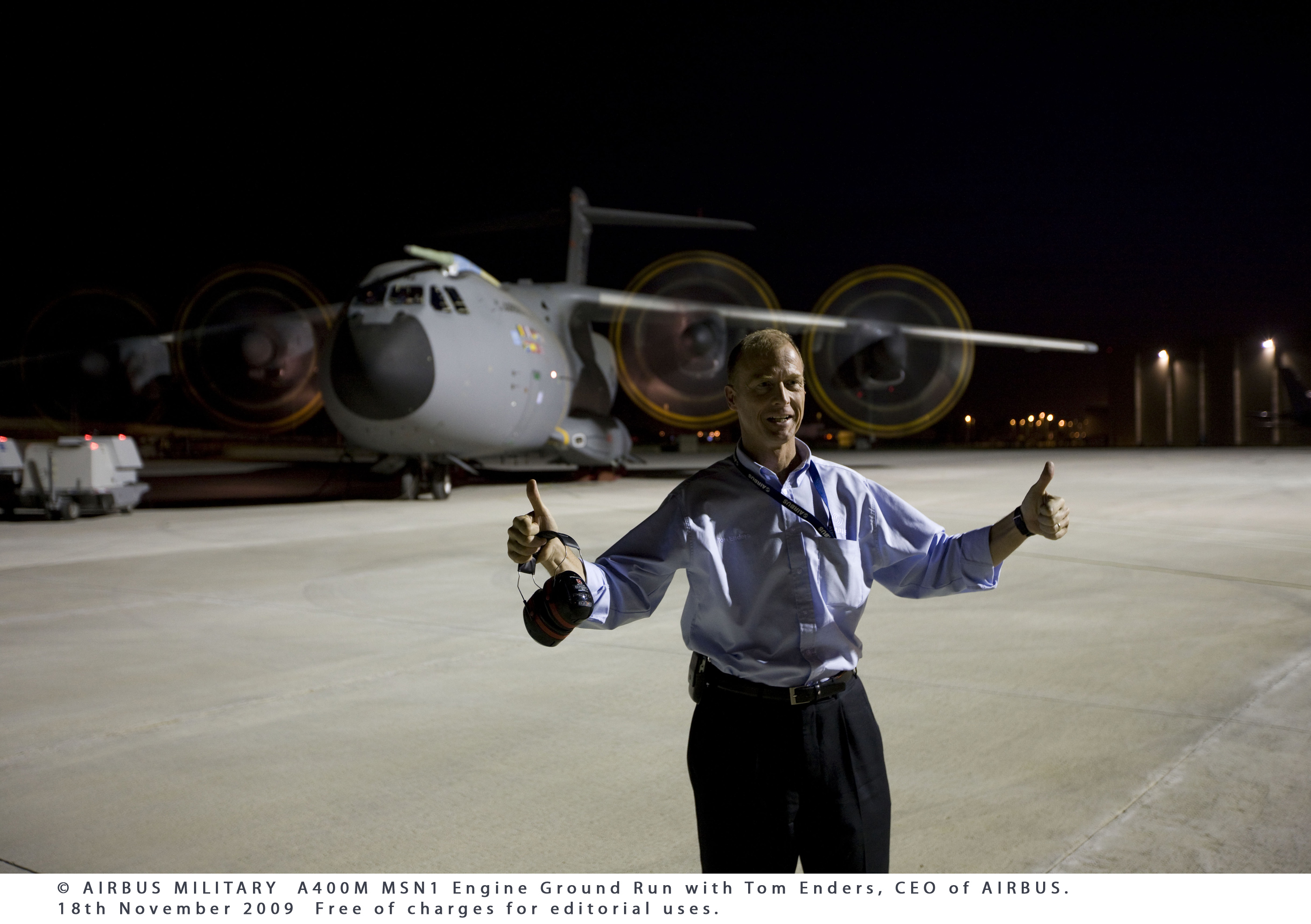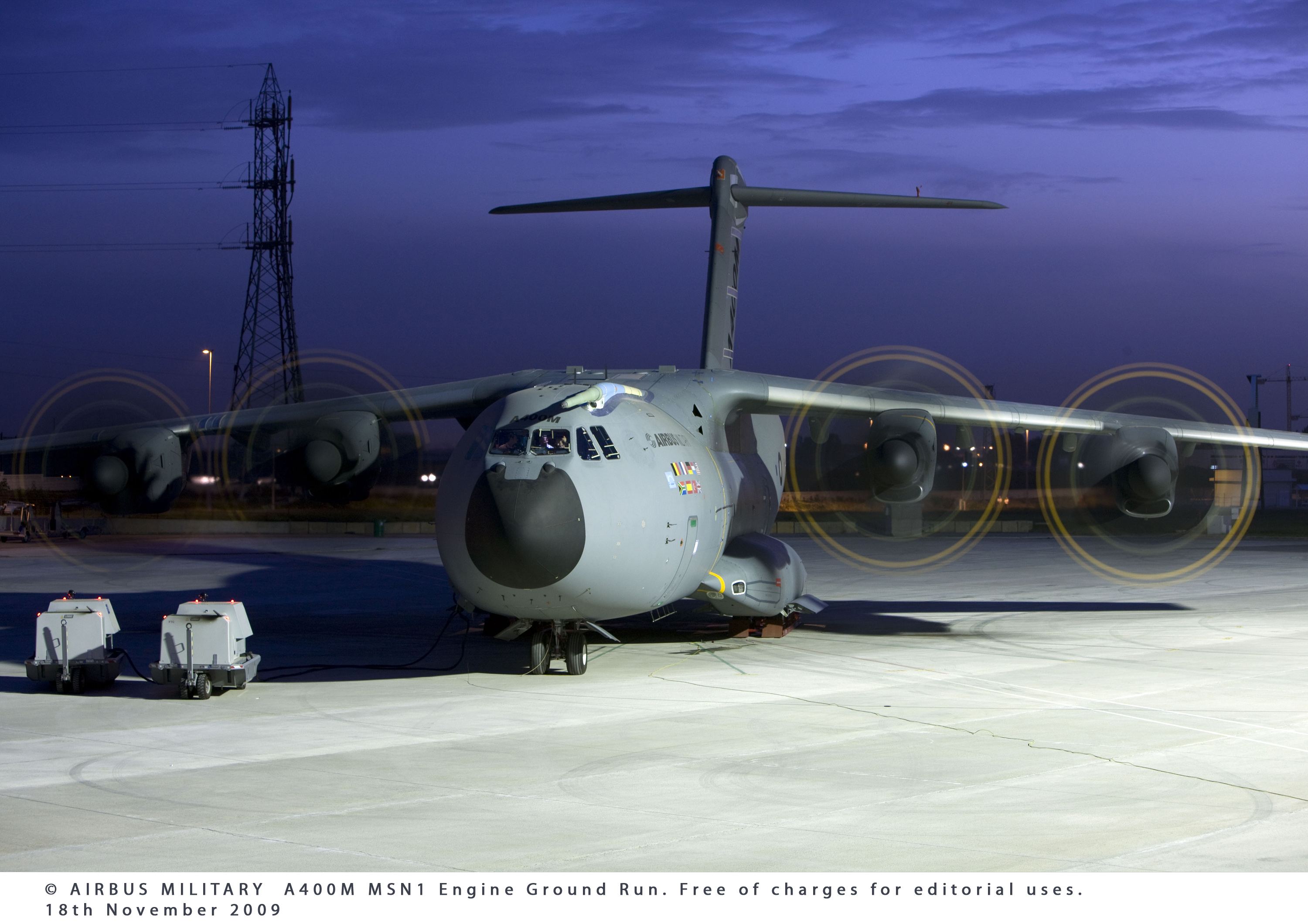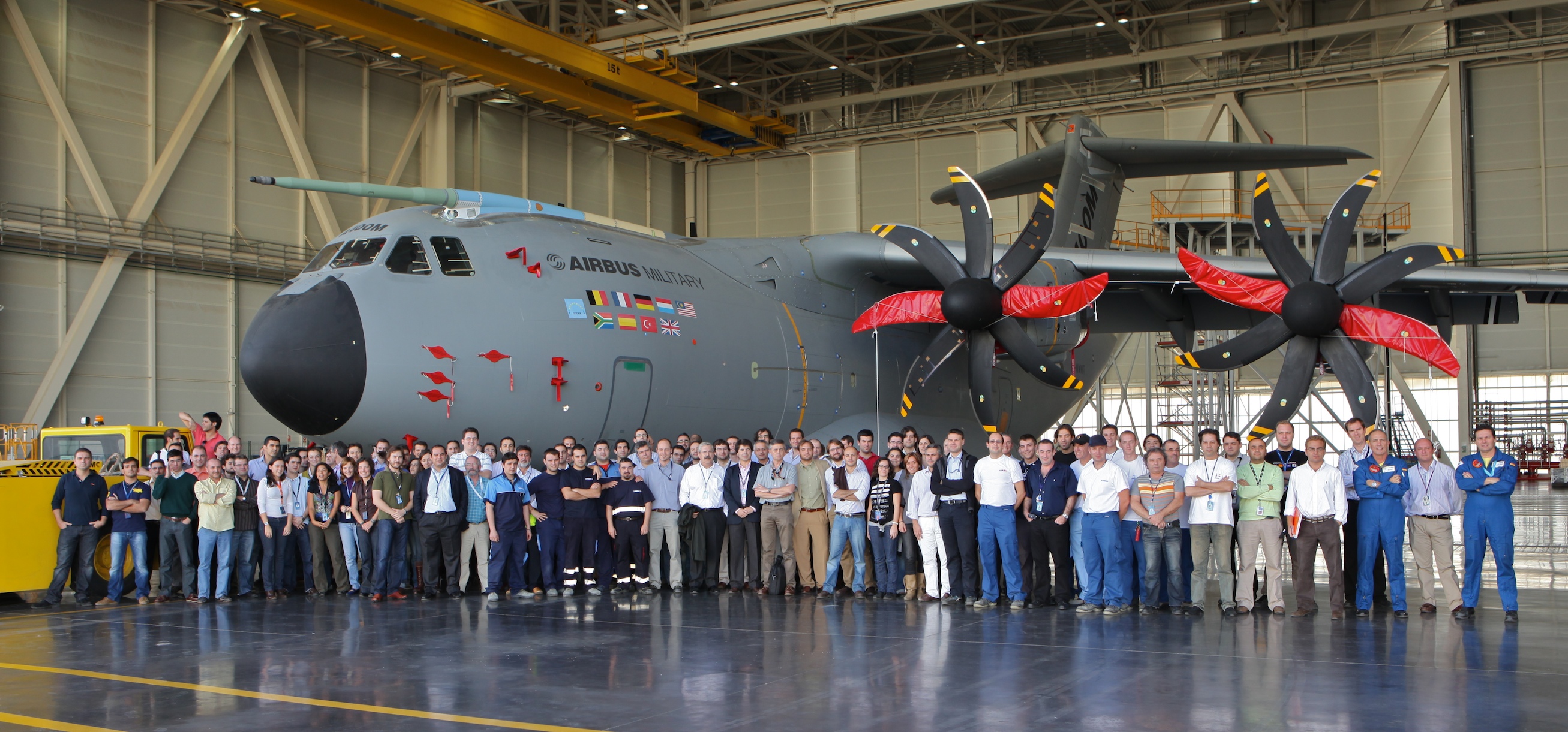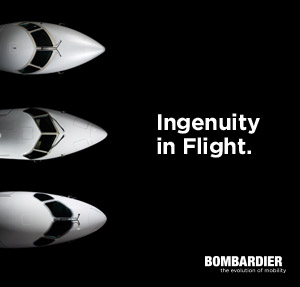Armed BLACK HAWK Demonstrator Completes Test Program
December 15, 2009
Customer Demo Shows Sikorsky Helicopter’s Weapons in Action
STRATFORD, Conn., Dec. 14, 2009 – Sikorsky Military Systems, a business unit of Sikorsky Aircraft Corp., and Elbit Systems Ltd. (NASDAQ:ESLT) have successfully completed the Armed BLACK HAWK (ABH) demonstrator program, proof-of concept for the development BATTLEHAWK™ helicopter. Sikorsky is a subsidiary of United Technologies Corp. (NYSE:UTX).
The ABH demonstrator program recently concluded in Israel with an opportunity for Sikorsky customers from around the world to observe the aircraft up close. Sikorsky Test Pilot Bill Fell provided a tutorial of the ABH demonstrator cockpit while the aircraft was on static display. Following the cockpit demonstration, customers visited a local military testing range where they observed a live-firing demonstration. The demonstration flight was conducted by Fell and an Israeli Air Force pilot.
“The successful conclusion of the demonstrator program signifies a major milestone for the Armed BLACK HAWK helicopter program,” said David Powell, Sikorsky Vice President, Worldwide Sales. “Sikorsky Aircraft has invested significant resources into this program in cooperation with the Israeli Air Force to prove the concept of these weapons, and we are pleased to announce that the technologies have been affirmed through our efforts. Together with Elbit Systems, and suppliers NEXTER and Rafael, we have established a winning combination for the success of the BATTLEHAWK helicopter program.”
The ABH demonstrator Flight Test program, which began in September 2008, was a cooperative effort between Sikorsky Aircraft and the government of Israel in conjunction with Elbit Systems Ltd., which is in charge of mission avionics and weapon systems integration. The program’s purpose was to produce an armed demonstrator for evaluation by the Israeli Air Force.
“I believe both companies benefited from this successful test program and we are looking forward to our next joint projects,” said Yoram Shmuely, Executive Vice President and Co-General Manager of Elbit Systems’ Aerospace Division.
The ABH demonstrator program tested an electro-optical guided missile, a laser-guided missile, a new laser-guided rocket system, and a 20-mm turreted gun. The production BATTLEHAWK helicopter will come equipped with a full suite of armed reconnaissance and attack capabilities, including an integrated helmet display Electro Optic Payload (EOP) and weapons options that include missiles, rockets, and fixed forward and turreted guns. These are available on new-build aircraft or as a kit that can be retrofitted onto existing BLACK HAWK helicopter platforms.
The BATTLEHAWK helicopter will provide medium-lift capability and firepower that cannot be duplicated by current dedicated utility or attack platforms. The aircraft can be used in either combat or peace time for such missions as troop transport, search and rescue, and disaster relief. On the modern battlefield, the BATTLEHAWK helicopter combines unique capabilities of advanced attack and accurate weapons delivery with deployment of fast-reaction teams.
Sikorsky Aircraft Corp., based in Stratford, Conn., is a world leader in helicopter design, manufacture and service. United Technologies Corp., based in Hartford, Conn., provides a broad range of high technology products and support services to the aerospace and building systems industries.
Tom Enders visits A400M facility in Sevilla
November 22, 2009
Airbus CEO met with flight test crew and engineers.
Tom Enders, CEO of Airbus, visited yesterday the A400M Final Assembly Line at San Pablo in
Seville and met with engineers conducting the ground tests of the new A400M military airlifter,
as well as with some of the flight crew preparing the aircraft for its first flight.
During a visit that lasted the whole afternoon he briefed on the progress of the programme,
which is expected to have its first flight before the end of this year. During the meeting with the
employees, he expressed his full support and thanked all those involved for their continued
effort and consistent contribution to the success of the project.
Mr Enders went on board the first A400M aircraft while it was being prepared for further tests
and inspected the cockpit and test equipment. He said he was extremely impressed with the
work that was being done.
“We have a great team working extremely hard, thanks to which we have made tremendous
progress over the past months. The excitement grows every day as we get closer to the first
flight of this fantastic aircraft,” said Tom Enders during the visit of the facility.
Later, the CEO was witness of an initial engine test.
First engine runs performed on A400M
November 22, 2009
Airbus Military achieved a key milestone in the A400M military airlifter programme when all four
Europrop International (EPI) TP400 turboprops on the aircraft were run simultaneously for the
first time on 18 November.
The event was the culmination of a series of tests in the previous 72 hours in which the engines
and propellers were first turned using ground power with no fuel in the fuel-lines, in a process
known as dry-cranking. Then they were turned with fuel in the lines but without starting the
engines, known as wet-cranking.
All four of the engines on aircraft msn 01 were successfully run for four hours beginning in the
early evening during an operation that lasted for 6.5 hours including preparation.
The engines ran at low power settings in ground-idle and flight-idle modes and will be run up to
maximum take-off power in further runs planned to take place shortly.
The operation at Airbus Military’s Seville, Spain facility was part of the procedure known as
destorage of the engines following the handover to the flight-test team at the end of the
previous week.
After the first full run, during which the engines performed flawlessly, the engine cowls were
opened and inspections showed that there had been no hot-air or fluid leaks.
On the subsequent runs the test team will continue exploring the behaviour of the engine itself
and also that of the aircraft systems that are powered by the engine.
Additionally the auxiliary power unit (APU), a separate small engine mounted on the aircraft
itself and designed to provide electrical power to the aircraft systems, was tested. It was used
to start the engines for the main engine run.
Airbus CEO Tom Enders, who personally witnessed the first full engine run-up, said: “I wish to
thank and congratulate the teams who worked extremely hard to reach this very important
milestone which paves the way to the A400M First Flight in the weeks to come.”
Fernando Alonso, Head of Flight Operations, added: “This is the first time we completely
powered up the aircraft using the engine power and the first time that the aircraft has been
operated completely autonomously.”
ENHANCED ERYX REGISTERS 100 % SUCCESS RATE
November 17, 2009
Eryx, the infantry short-range fire support weapon, now features new night targeting capabilities and a new training simulator. During its first international evaluation in October 2009, the new Eryx registered eight hits out of eight firings.
During its first export demonstration, carried out in the Gulf at the beginning of October, the enhanced Eryx anti-armour system registered a 100% hit rate during a test firing campaign which comprised a total of eight shots. Of these eight shots, four were carried out at night with the aid of the latest generation thermal sight designed for adaptation on the Eryx firing post.
As well as proving the new enhanced night capabilities, the firing campaign also enabled well known Eryx features to be confirmed: suitable for firing within confined spaces, exceptional penetration capability against reinforced concrete and ease of operation. With regard to the latter feature, the client’s own evaluators fired the majority of the missiles having previously undergone only two hours’ training on the simulator.
The new Eryx thermal sight replaces the classic, cooled infrared detectors with a new, non-cooled bolometric sensor which brings various advantages. Without a cooler, the new thermal sight is totally silent and therefore more discreet for night combat. Other advantages associated with the new sighting system include reduced weight, increased reliability and prolonged battery life. Rather than losing sensitivity, this non-cooled sight actually provides an augmented range for detection, reconnaissance and identification, a range which significantly exceeds the range of the Eryx missile.
The enhanced Eryx system also introduces NETS (New Eryx Training Simulator), a new generation technical training simulator. Based on a modified firing post and a PC serving to programme ground engagement scenarios, NETS introduces new improved features with encrusted 3D targets in the scenario seen by the firing operator through the aiming optics.
In service since 1993, over 57,000 Eryx missiles have been ordered. The system has been used operationally and, thanks to its eight customer countries, has become recognised as a global benchmark for short-range ground combat. Discreetness while firing, warhead lethality and its alignment guidance method all combine to enable Eryx to be used with equal effectiveness in asymmetric urban combat as well as in open terrain operations against armour or all other mobile targets. These features also serve to make Eryx a formidable weapon against fortifications.
The new, enhanced Eryx development, self-funded by MBDA since 2007, has already obtained its first customer, a customer in the Middle East where the different system elements (firing post, munitions and simulator) will enter service during 2010.
.
ROSOBORONEXPORT AT DUBAI AIR SHOW 2009: NEW PROJECTS FOR ARAB COUNTRIES
November 17, 2009
During the “Dubai Air Show 2009” International aerospace exhibition (15-
19 November, UAE) Rosoboronexport’s delegation plans to discuss with its
partners new Russian proposals for strengthening national defences of a number of
the Gulf and Arabian peninsular countries.
“Dubai Air Show 2009 is an important venue for the world’s aerospace
industry, and our participation in it provides an excellent opportunity for us and
our partners to harmonise present-day and future arms sales projects including
joint production and research and development ones”, – said special projects
director Mikhail Zavaliy, the head of the Rosoboronexport delegation at the Dubai
airshow .
These days Russia, braving tough competition, is steadily increasing its
share in the Middle East arms markets. This is testified by the amounts of
contracts being realised. The United Arab Emirates, Kuwait, Syria, Algeria,
Libya, Egypt – those are just a few examples of countries with which Russia has
been consistently developing mutually advantageous partnerships.
It plays an immensely positive role that our relationships with the Middle
East countries, including defence and security, have a rich, dozens-of-years old
history filled with many important events. Russian arms are generally reputed in
Arab countries as reliable and good-quality weapons that are combat ready even in
extreme conditions. It is a common belief here that Russian weapons of both
earlier and latest makes will long occupy leading positions in their classes as they have no analogues in
the world.
A number of existing and advanced samples of Russian weapons are showcased at the Dubai
airshow. The Russian exposition organized this year by the “Rostekhnologii” State Corporation accommodates stands with delegations of the FSUE “Rosoboronexport”, United industrial corporation “Oboronprom”,
JSC “Sukhoi experimental design bureau”, JSC “Russian aircraft corporation “MiG”, JSC “Irkut Corporation”, and other enterprises and organizations.
The FSUE “Rosoboronexport” presents at the show a wide range of Russian aircraft, armaments, air defence systems and other hightech products. It is a factor of increased attention paid to them by the countries in the region. A considerable interest is provoked by the latest models of Russian combat aircraft such as Su-35, Su-30MK2, MiG-35 and MiG-29SMT,
Yak-130 combat trainer, various types of Mil and Kamov helicopters, as well as air defence systems.
Special attention is paid to the Su-35 multi-role super-manoeuvrable fighter incorporating the 5th generation technologies that give it an edge over counterparts. The Su-35’s main distinctive features include an advanced avionics suite and a phased array radar with enhanced target detection range and a capability of tracking 30 targets while engaging eight of them. A new powerful
engine with thrust vector control makes the aircraft super-manoeuvrable. The aircraft can pose a serious threat to the enemy when performing air superiority and air-to-ground/air-to-surface strike missions in any weather by day and night
carrying stores on its 12 hardpoints: a combat payload of guided and unguided munitions weighing up to 8 tonnes.
The Yak-130 combat trainer to be inducted soon into the Russian Air Force for fighter pilots training,
including pilots of the newest Su-35 and MiG-35 aircraft, is scrutinized by arms procurement experts too. Thanks to its high flight performance data, reliable fly-by-wire flight control system and modern glass cabin, the Yak-130 combat trainer is an
efficient and safe training facility for learning to fly modern and prospective aircraft including those of non-Russian origin. This aircraft can be operated from unpaved airfields. Its service life counts 10,000 flight hours, and the airframe is
designed for at least 30-years operation. Besides, the Yak-130 can be employed to fly strike missions in low-intensity conflicts.
Great popularity is enjoyed by various Mi-type helicopters, such as combat transport Mi-35P and Mi-35M, military transport Mi-171Sh, and heavylift Mi-26 boasting the world’s best load-carrying capacity.
The Ka-52 “Alligator” Russian combat helicopter also stirs up huge interest. Its flight crew can not only engage helicopter’s huge combat potential but also provide interoperating airborne and ground strike systems with target
acquisition and designation data, including laser designation. The Alligator is Yak-130
equipped with advanced systems providing target acquisition and designation, and automatic low-altitude flight capabilities. Besides, the Ka-52 helicopter can be used to train pilots and maintain their flight proficiency, thus excluding the
need for a dedicated training helicopter analogue.
Specialists and guests visiting the show will also be able to familiarise themselves with various
Kamov-family helicopters such as the Ka-31 radar picket helicopter, Ka-28 ASW helicopter, Ka-29 shipborne
combat transport helicopter, Ka-27PS ship-borne SAR helicopter, and Ka-32 multi-purposehelicopter.
Traditionally Russia holds strong positions as regards air defence systems. Nowadays when the role of combat aviation and high-precision weapons in modern war conflicts is ever growing and air defences are also seen as
increasingly important, assets presented at the Dubai airshow can be used to set up an integrated air defence system providing interception at different altitudes and ranges of both conventional air targets and non-strategic ballistic missiles.
The latest S-400 “Triumph” air defence missile system is one of the most effective arms designed to defeat all types of existing and prospective air strike weapons. Air defence missile complexes making up the “Triumph” system can
engage aerodynamic targets at a range of up to 250 km, and ballistic targets – up to 60 km, at an altitude of up to 27 km. They can be integrated into any air defence system structure. The same applies, for instance, to the “Pantsyr-S1” air
defence missile-gun system capable of engaging targets having minimal radar cross sections.
Attention of high-ranking officers and experts will undoubtedly be drawn to the “Buk-M2E” medium-range and “Tor-M2E” short-range air defence missile systems. These unique Russian weapon systems in combination with
modern reconnaissance means can lay the foundation for setting up a highly effective anti-air and ballistic missile defence system responsive to modern threats in any Middle East country.
Other areas of eventual military-technical cooperation also will be discussed in Dubai. The FSUE Rosoboronexport will present
to its partners high-precision air-toair/ air-to-surface guided missiles and gliding bombs, a wide range of
radars and targeting systems, navigation and flight control systems, communication and life support equipment, as well as training aids that help reduce specialist training durationby 1.5 to 2 times, training costs by many times, and saves service life of
expensive materiel.
During talks special emphasis will be made on upgrading materiel supplied earlier, setting up technical centres, and organising a comprehensive post-sale servicing system. Potential customers can be offered flexible accounting conditions.
“The Middle East arms market has large capacity and remains the most important for Russia”, – pointed out the head of Rosoboronexport’s delegation Mikhail Zavaliy. – This is why our relations with Arab partners have a very wide
range from aircraft to air defence systems to space technologies where Russia owns all required technologies and resources”.
Rosoboronexport is the only Russian enterprise entitled to offer for export the whole range of military and dual-purpose products, technologies and services. The status of the Enterprise warrants state support for all export transactions.
Rosoboronexport is among leading companies at the world arms market, accounting for more than 80% of Russia’s military-purpose equipment exports. Russia maintains military-technical cooperation with more than 70 countries all
over the world.
Rosoboronexport highly values its reputation of a reliable partner, and
strictly abides by the letter and spirit of Russia’s international commitments in
military and political, including arms control, areas.
Pratt & Whitney Delivers F100-229 Engines to Pakistani Air Force
November 16, 2009
DUBAI, United Arab Emirates, Nov. 16 /PRNewswire-FirstCall/ — DUBAI AIR SHOW — Pratt & Whitney has delivered the first Pakistani Air Force F100-PW-229 Engine Enhancement Package (EEP) engine to Pakistan this week, for installation in their F-16 Block 52 aircraft. The engine program is valued at approximately $150 million and is scheduled for delivery in 2009 and 2010. Pratt & Whitney is a United Technologies Corp. (NYSE: UTX) company.
“We are honored by the Pakistani Air Force’s decision to continue with Pratt & Whitney as the propulsion for their F-16 Fleet. Building on the legacy of the F100-PW-220 in operation for more than 25 years, we look forward to providing new F100-PW-229 EEP engine to power their latest purchase of F-16s,” said Bill Begert, Vice President of Military Business Development and Aftermarket Services for Pratt & Whitney. “We look forward to continuing the long and successful relationship by delivering high quality, dependable engines to our customers in Pakistan.”
The F100-PW-229 EEP engine offers the Pakistani Air Force a lower total cost of ownership and an outstanding record of safety. The EEP is the latest evolution of the F100 family of fighter aircraft engines. The EEP configuration will aid the Pakistani Air Force in reducing the life cycle cost associated with scheduled engine maintenance by up to 30 percent through extending the depot inspection interval from 4300 to 6000 TACs. The EEP engine builds on the excellent safety record of the F100-PW-229 and incorporates the latest technologies for today’s F-15 and F-16 fighter aircraft around the world.
Pratt & Whitney military engines include the F135 for the F-35 Lightning II, the F119 for the F-22 Raptor, the F100 family that powers the F-15 and F-16, the F117 for the C-17 Globemaster III, the J52 for the EA-6B Prowler, the TF33 powering AWACS, Joint STARS, B-52, and KC-135 aircraft, and the TF30 for the F-111. In addition, Pratt & Whitney offers a global network of MRO and MAS focused on maintaining engine readiness for our customers. Pratt & Whitney is a world leader in the design, manufacture and service of aircraft engines, space propulsion systems and industrial gas turbines. United Technologies, based in Hartford, Conn., is a diversified company providing high technology products and services to the global aerospace and building industries.
A400M begins ground tests prior to first flight
November 13, 2009
The first Airbus Military A400M has been handed over to the Airbus “Flight Test” organisation on 12 November, paving the way to the beginning of the various ground tests which are to be performed before the aircraft takes to the air before year end. The purpose of these ground tests is to verify that all aircraft systems, powerplant and flight test instrumentation work properly, in order to ensure a safe First Flight, and subsequently an efficient flight test campaign.
The ground tests include static tests and engine run-ups during which the interaction between all systems, the powerplant and the aircraft is controlled and validated. The correct operation of the telemetry system which will be subsequently used to follow the flights during the development campaign will also be checked during these ground test campaign. Following satisfactory completion of the static tests, the first taxi runs can start. These begin with low speed taxis (up to 60 kts) and brakings, and are to be followed by high speed trials with a rejected take-off at about 120 kts. During these trials, the behaviour of all systems, and the turboprop engines, as well as the reaction of the aircraft to braking and lateral control, is thoroughly checked.
After each trial a thorough analysis of the findings as well as the status of the aircraft will determine when the next trial will take place, leading to a first Take-Off before year end.
Lockheed Martin Sonar Array System for Spain’s S-80 Diesel Electric Submarines Completes In-Water Testing
November 13, 2009
Manassas, Va., Nov. 12 /PRNewswire/ — Lockheed Martin (NYSE: LMT) successfully completed in-water testing of a new cylindrical array sonar system for Spain’s S-80 class diesel electric submarines at the U.S. Navy’s Underwater Test Facility at Seneca Lake, N.Y.
The cylindrical array is the primary acoustic sensor for submerged operations. It consists of a special hydrophone configuration that is unique to every platform. Lockheed Martin designed and developed the S-80’s new array under a 2005 contract from the Spanish government to provide the submarine’s integrated combat system.
In addition to the cylindrical array sonar, the S-80’s integrated combat system also will contain a flank array sonar and a passive ranging sonar, as well as mine and obstacle detection sonar. The flank and passive ranging sonars were successfully tested in June. The sonars are designed, manufactured and assembled by Lockheed Martin’s Undersea Systems business in Manassas, Va. and Syracuse, N.Y.
The new S-80 integrated combat system leverages proven commercial technology used on the U.S. Navy’s Virginia, Seawolf and Los Angeles class submarines, as well as Lockheed Martin’s experience as the lead contractor for the U.S. Navy’s Acoustic Rapid Commercial-Off-the-Shelf (COTS) Insertion program since its inception in 1996. This experience with the Navy has influenced the company’s work on exportable versions of sonar array systems specifically for non-nuclear submarines, including Lockheed Martin’s forward and back-fit scalable International Diesel-Electric Submarine Integrated Combat System (SUBICS).
“These successful tests are important milestones towards satisfying key deliveries for the S-80 submarine program and also provide substantial risk mitigation prior to installation on the actual submarine,” explained Al Simpson, program management director, International Submarines and Coastal Systems for Lockheed Martin. “The delivery of the entire open architecture, COTS-based, integrated combat system for S-80 will usher in a new and important capability for diesel-electric submarines.”
Airbus Military A330 MRTT performs wet hose and drogue refuelling contacts with F-18
November 13, 2009
The Airbus Military A330 MRTT (Multi Role Tanker Transport) has completed another major milestone performing successfully a series of wet contacts using the new generation Cobham 905E hose and drogue refuelling pods, located under the wings. The receiver aircraft was a Spanish Air Force F/A-18A+ fighter.
This first “wet contact” using the advanced new generation pods demonstrates that the refuelling system is well integrated into the airframe, with all systems functioning satisfactorily. It also validates the fuel transfer capability of the A330 MRTT to receiver aircraft through this refuelling means, as tested on the ground in early September and with dry contacts late May.
On- Ground refuelling tests through the conventional hose and drogue system had already successfully been conducted in September, transferring more than 200 metric tonnes of fuel.
With this new achievement the A330MRTT has demonstrated a total tanking capability as both boom and pods have been tested and have transferred fuel in flight. The testing will continue to complete full system certification. This achievement is the initial step to clear the air-to air (AAR) operations for the UK’s Future Strategic Tanker Aircraft (FSTA) programme, which does implement the pod hose-and-drogue system and does not implement the boom system.
This new refuelling pod is a development of the 907E pod already in service with the Canadian and German air forces on their A310 MRTTs. The pods can each deliver up to 420 US gal/min (1600 litres/min) through a 90 ft (27.4 m) hose, and are controlled from a state-of-the-art Fuel Operator Console located in the cockpit.
During the flight a total of 6 contacts were performed, with more than 4000 kgs of fuel being transferred.
The A330 MRTT used for the exercise is the first for the Royal Australian Air Force, which is due to be handed over to the customer by mid-2010. Flight test of the second A330 MRTT for Australia was finished in Brisbane where the aircraft has been modified by Qantas and flown back to Spain to perform some final test flights jointly with the first one. The third aircraft is already in Brisbane, currently under conversion. In total, five have been ordered by the RAAF, with another 23 by three other nations, bringing the total to 28 A330 MRTTs ordered.
The A330 MRTT has been selected by the air forces of Australia, the United Kingdom, Saudi Arabia and the United Arab Emirates, and was chosen last year by the U.S. Air Force for its recapitalization of the service’s aging tanker fleet.
South Africa Cancels Contract
November 7, 2009
South Africa has decided to terminate the contract
to purchase eight A400M Airbus strategic lift aircrafts.
The South African government has cited the escalating
costs and delivery delays which were due to have been
delivered in March 2009.
South Africa is the first A400M customer to cancel it order
and full out of the program
The cost of the eight A400M ballooned from 17-billion Rand
in 2005 to 47 billion Rand.
by Israel Rafalovich
<










